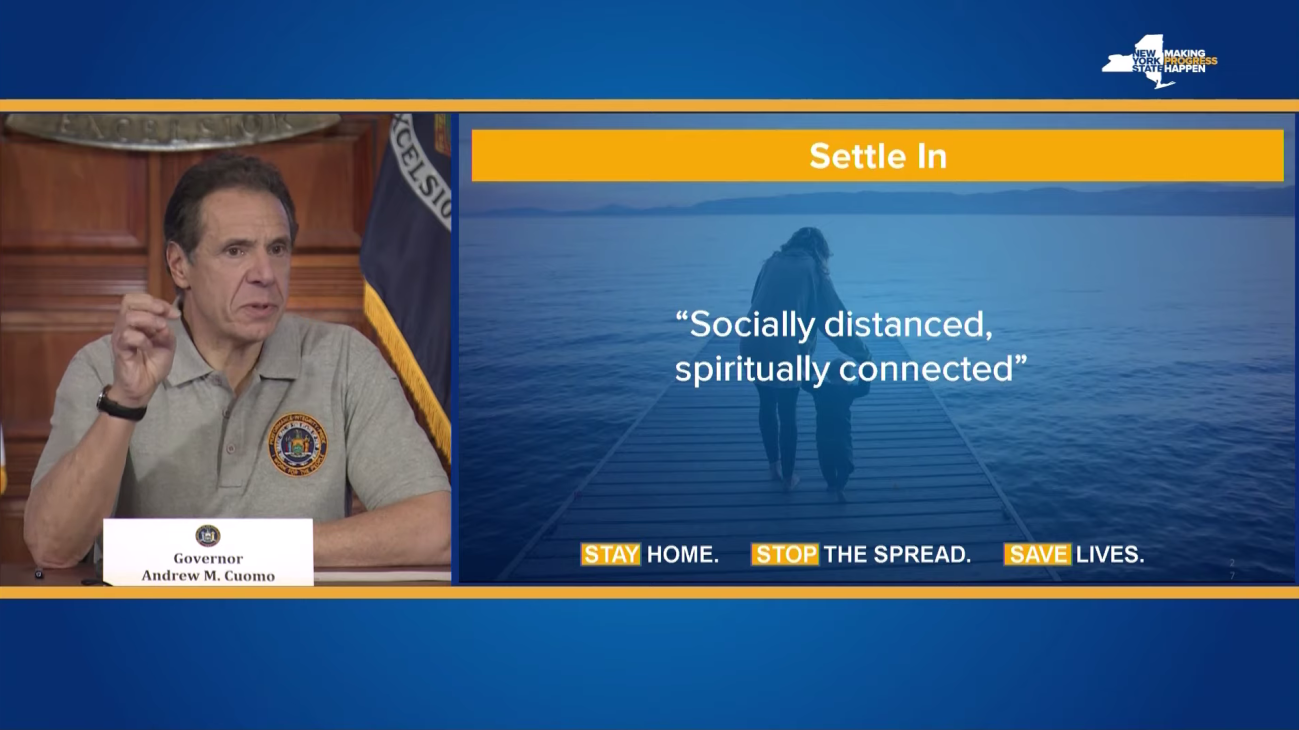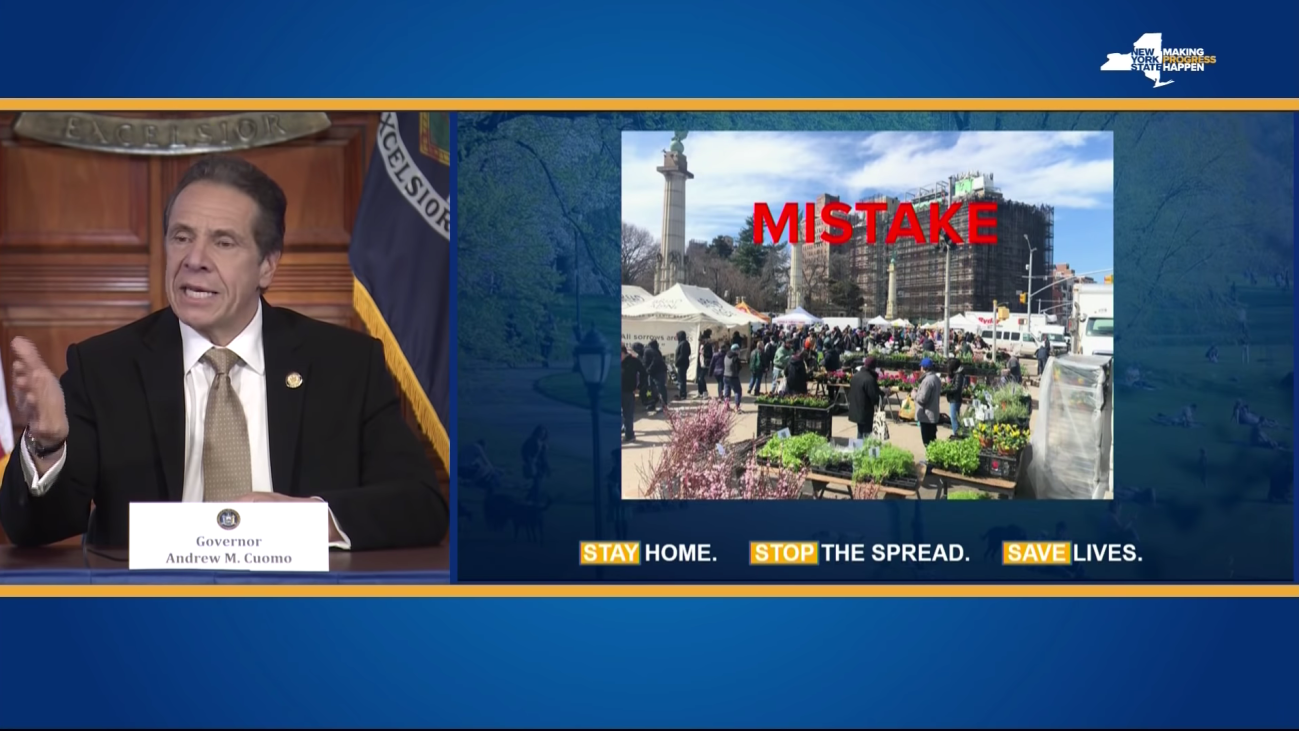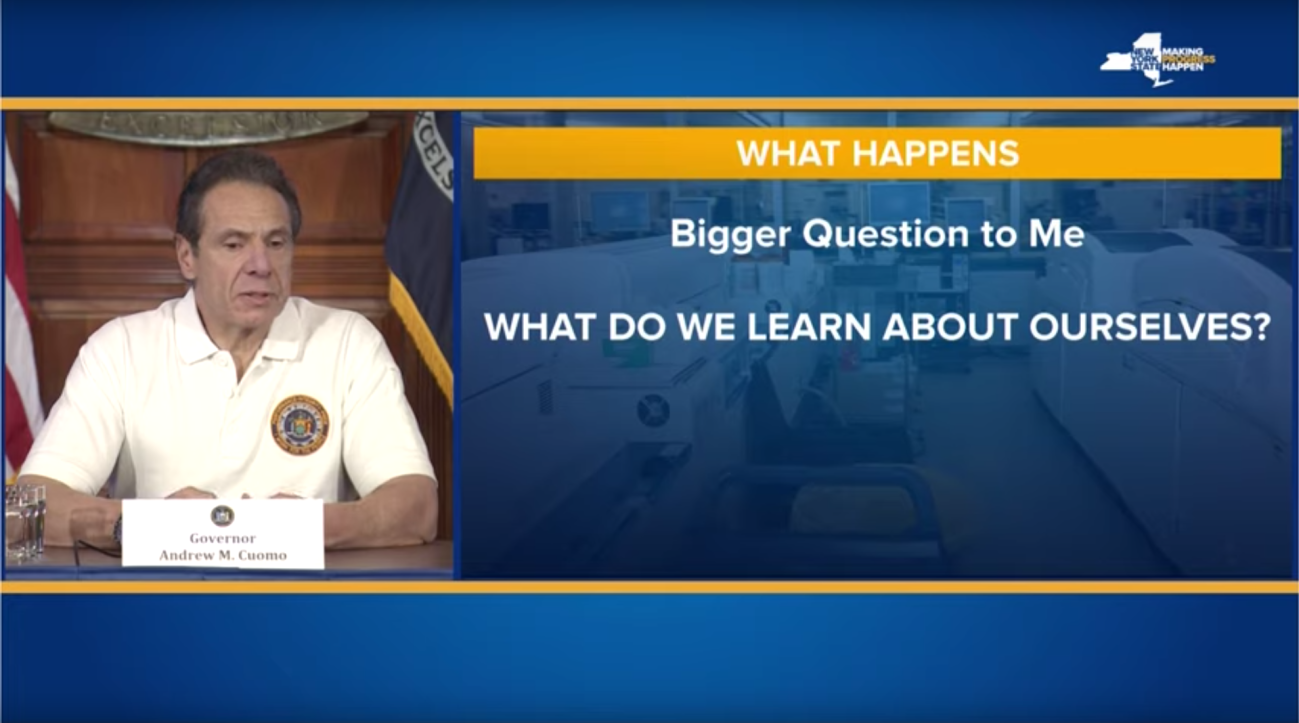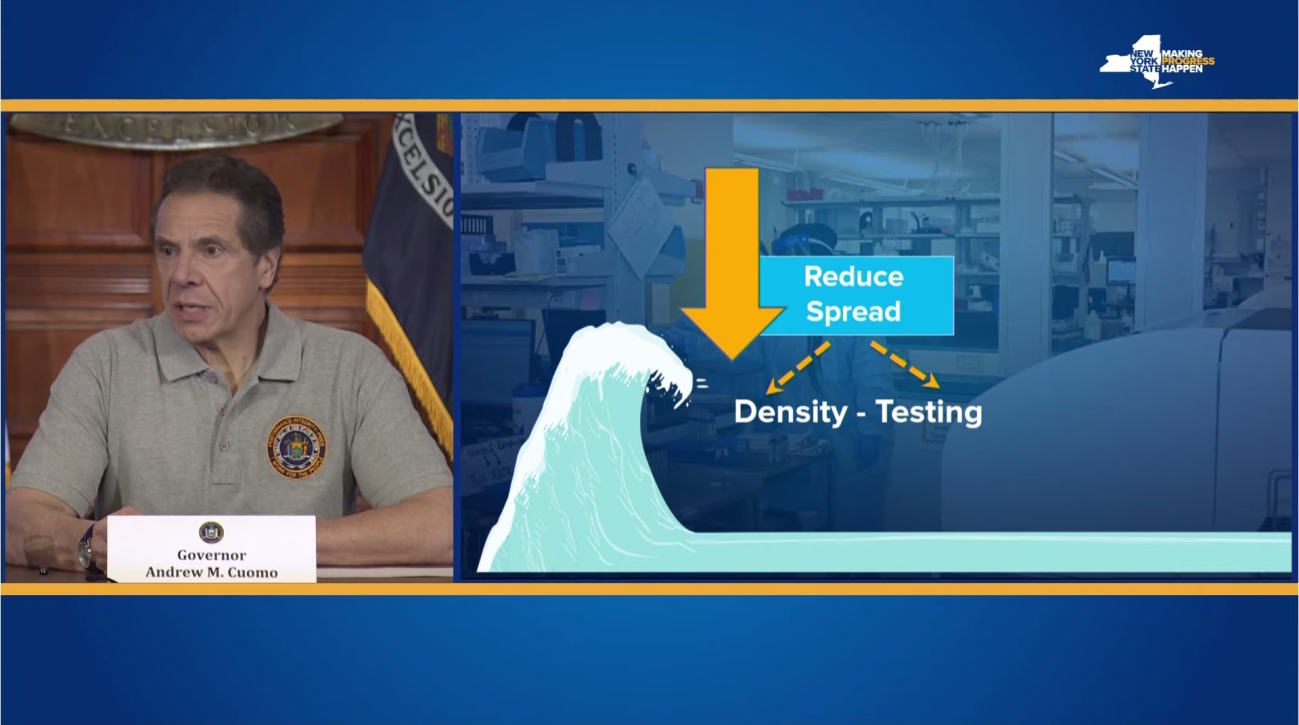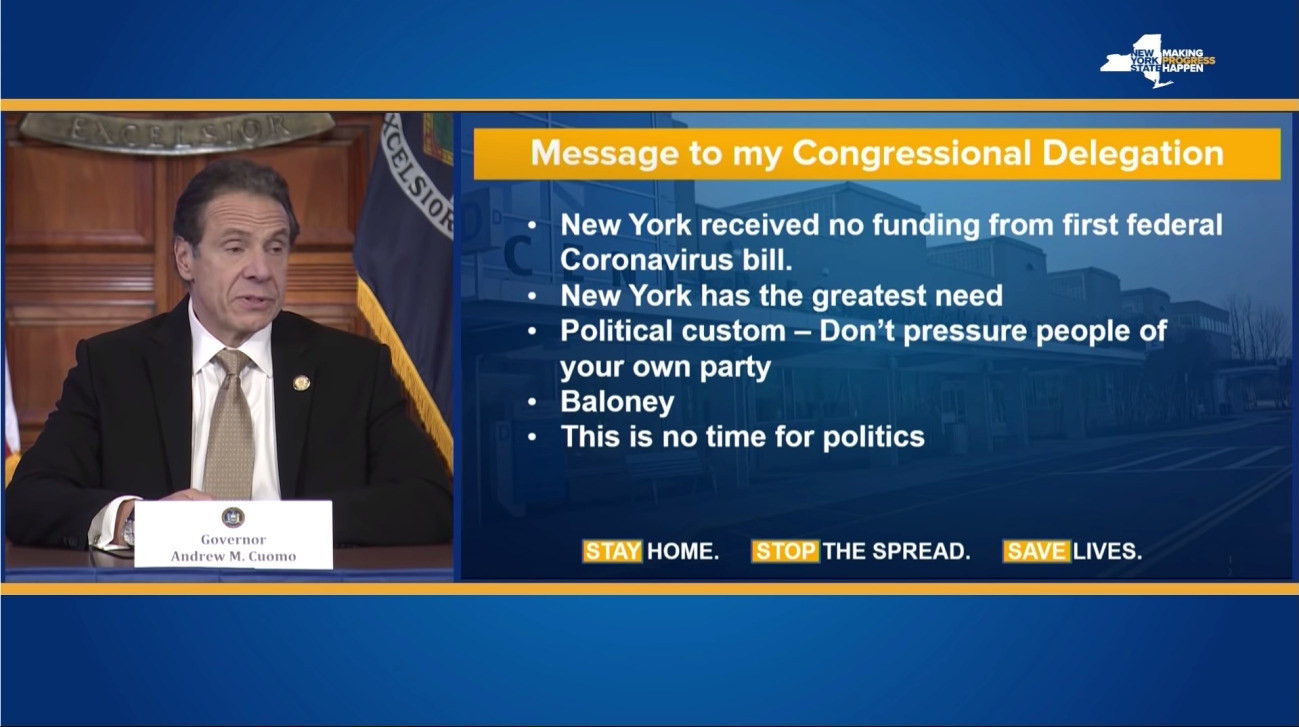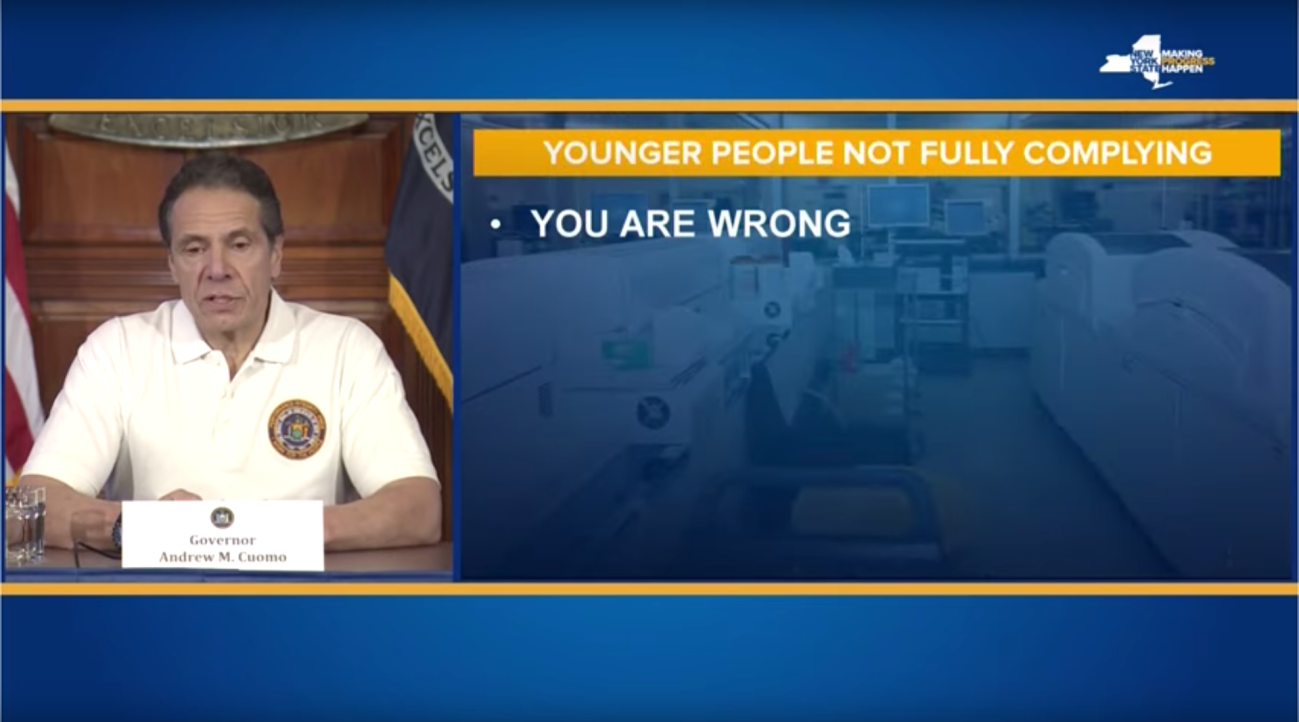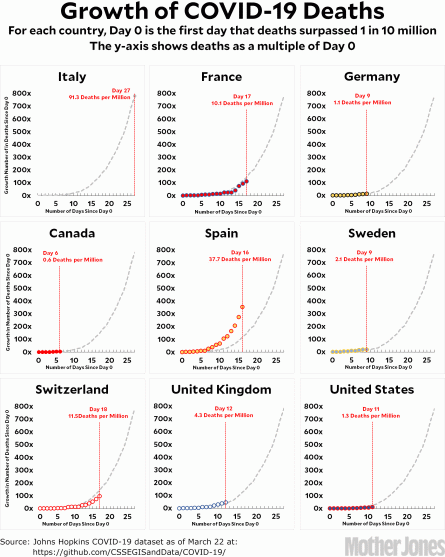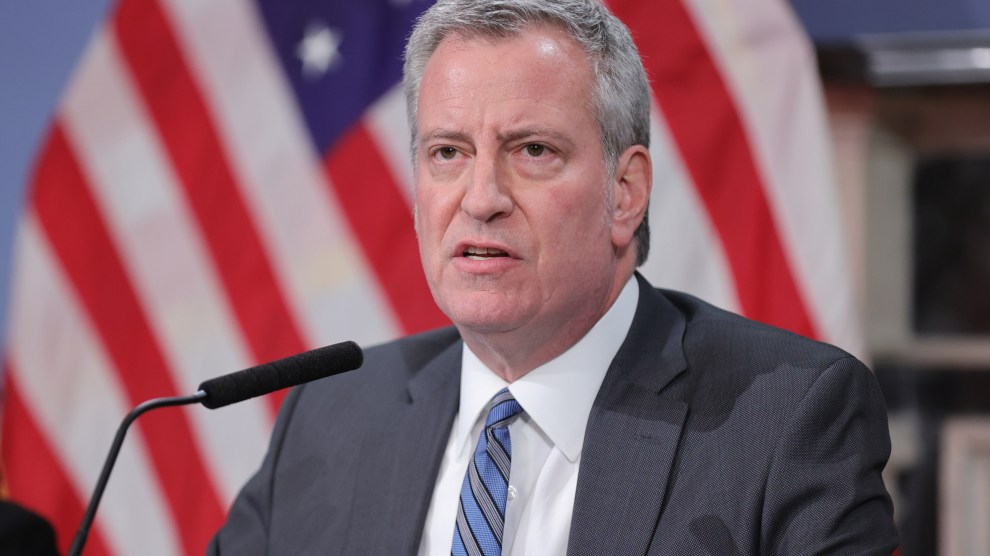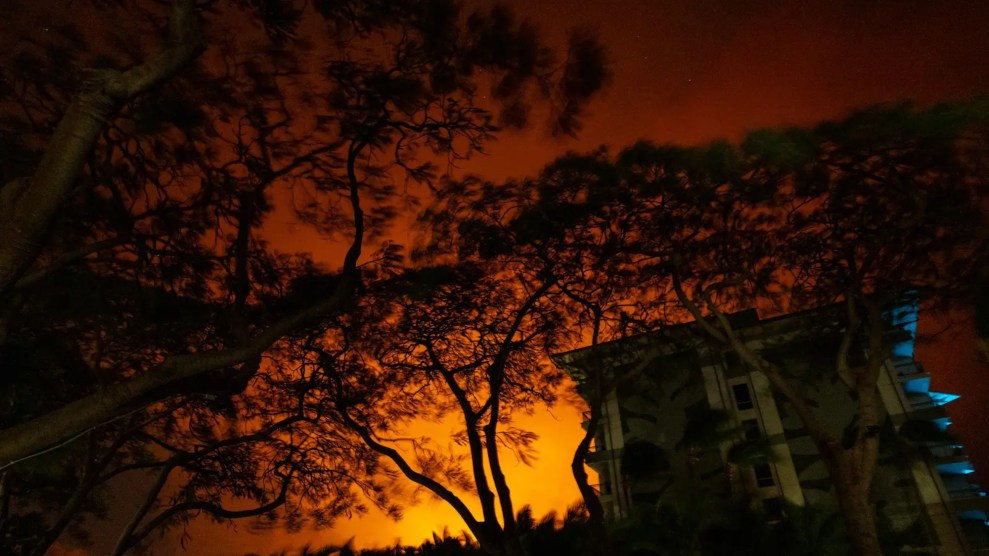As of Monday, there are nearly 40,000 confirmed coronavirus cases in the United States. More than half of them are in New York, making it the epicenter of America’s rapidly developing pandemic. Though New York Gov. Cuomo has long been resistant to ordering a shelter-in-place, last week he issued an executive order advising New Yorkers to “stay home as much as possible,” banning large gatherings and shutting down nonessential businesses. On Monday morning, Gov. Cuomo instructed hospitals to increase capacity by at least 50 percent and requested retired medical professionals temporarily come out of retirement to assist overburdened frontline medical workers.
Throughout all of this, Cuomo is emerging as a national source of guidance. His daily coronavirus press briefings have become “appointment viewing” for New Yorkers and beyond (I stream them from California). Each one runs about an hour, and typically involves Cuomo, with the help of his signature PowerPoint slides, running through the numbers of confirmed cases and hospitalizations, a summary of actions the state is taking to “flatten the curve,” and reassurances that New York—and the country at large—will only be a better place after all of this is over. Then he takes questions from journalists, who sit in chairs strategically placed at least six feet apart.
His calm authority is in direct contrast to President Trump’s tantrum-esque responses to the press when asked about the pandemic, leading one media columnist to describe Cuomo as “The Control Freak We Need Right Now.” Some corners of the internet are even debating whether the tough-talking Queens native, known for bullying his dissidents and most recently, using prison labor to manufacture hand sanitizer, is hot. As Rebecca Fishbein wrote for Jezebel, “when I stream his presser on the governor’s website—every day around 11:30 a.m., complete with a PowerPoint presentation—I feel comforted. I feel alive. I feel protected. I feel… butterflies.”
This is neither the time nor place to litigate whether Cuomo is hot, but it’s worth highlighting how his PowerPoints, complete with reassuring platitudes and some strategic clip art, are oddly charming and a tiny source of comfort while the country scrambles to address a deadly pandemic. Here are a few of my favorite slides:
